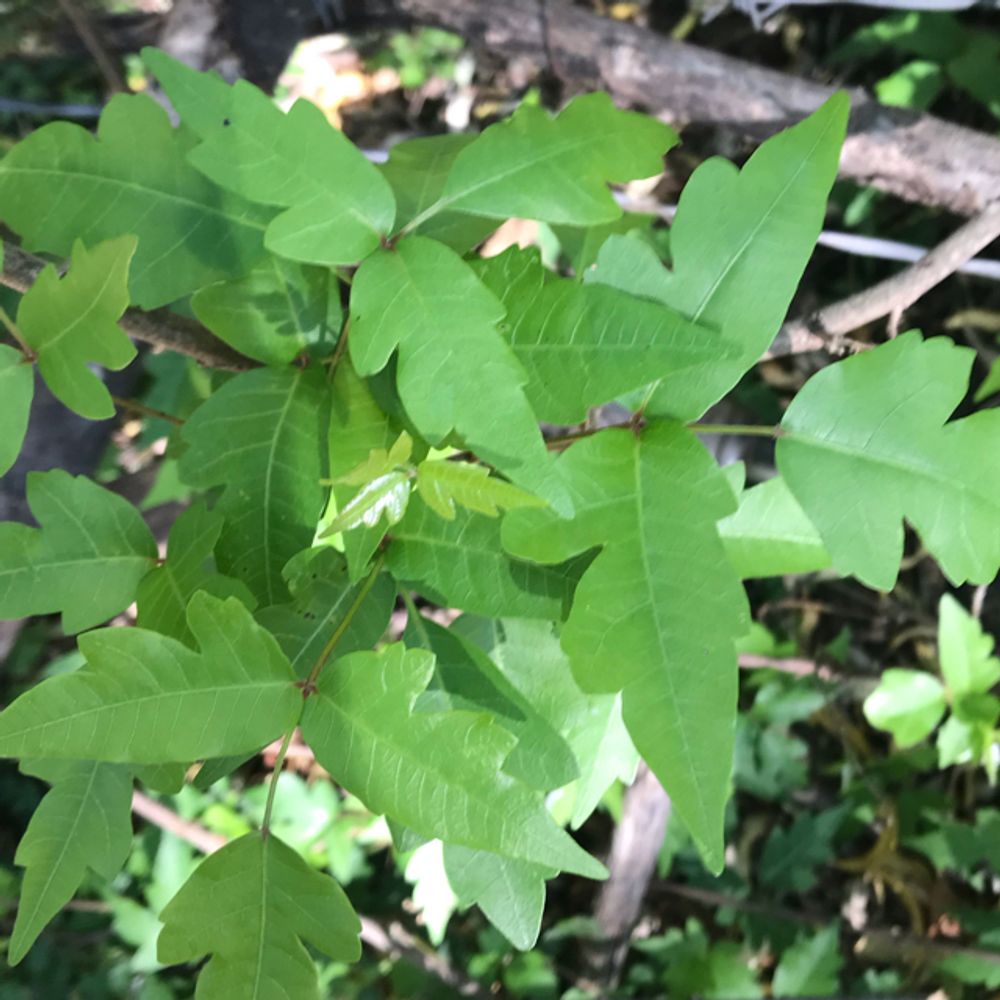Western poison ivy
(Toxicodendron radicans radicans)

Description
Toxicodendron radicans radicans is a woody vine that is commonly known as poison ivy. It is a member of the cashew family and is native to North America. The plant is known for its toxic sap, which can cause skin irritation, blisters, and rashes in humans. This article will provide an in-depth look at the Toxicodendron radicans radicans plant, including its characteristics, habitat, toxicity, and control methods. Characteristics Toxicodendron radicans radicans can grow as a shrub or a vine, depending on the environment it is in. The vine can grow up to 30 meters long and is supported by aerial roots that attach to trees and other surfaces. The leaves of the plant are compound and alternate, with three leaflets that are ovate to elliptic in shape. The leaflets are 3-12 cm long and 2-8 cm wide. They have a smooth, glossy surface and a bright green color in the summer, which turns to red or orange in the fall. The stems of the plant are woody and can be up to 10 cm in diameter. Habitat Toxicodendron radicans radicans is found in a wide range of habitats, including forests, fields, and along roadsides. It prefers moist areas and can grow in both full sun and partial shade. The plant is native to North America and is found throughout the United States, except for Alaska and Hawaii. It is also found in parts of Canada, Mexico, and Central America. Toxicity The toxicity of Toxicodendron radicans radicans is due to the presence of an oil called urushiol in the sap of the plant. Urushiol is a potent allergen that can cause an allergic reaction in most people who come into contact with it. The severity of the reaction can vary depending on the amount of urushiol that comes into contact with the skin, as well as the individual's sensitivity to the allergen. Symptoms of an allergic reaction can include itching, redness, swelling, and blistering of the skin. In severe cases, the reaction can also include difficulty breathing, swelling of the face and throat, and fever. Control Methods There are several methods for controlling Toxicodendron radicans radicans, including physical removal, chemical control, and biological control. Physical removal involves physically removing the plant from the area. This can be done by pulling the plant out of the ground or cutting it down. Care must be taken when handling the plant, as contact with the sap can cause an allergic reaction. Chemical control involves using herbicides to kill the plant. The most effective herbicides for controlling Toxicodendron radicans radicans contain the active ingredient glyphosate. Care must be taken when using herbicides, as they can also harm other plants and animals in the area. Biological control involves using natural predators to control the plant. There are several insects that feed on Toxicodendron radicans radicans, including the leaf-eating beetle and the lacewing bug. While this method can be effective, it is not always practical, as it can take several years for the predators to establish themselves in the area. Conclusion Toxicodendron radicans radicans, or poison ivy, is a common plant found throughout North America. It is known for its toxic sap, which can cause an allergic reaction in most people who come into contact with it. While the plant can be difficult to control, there are several methods for removing it from an area, including physical removal, chemical control, and biological control. Care must be taken when handling the plant, as contact with the sap can cause an allergic reaction.
Taxonomic tree:







